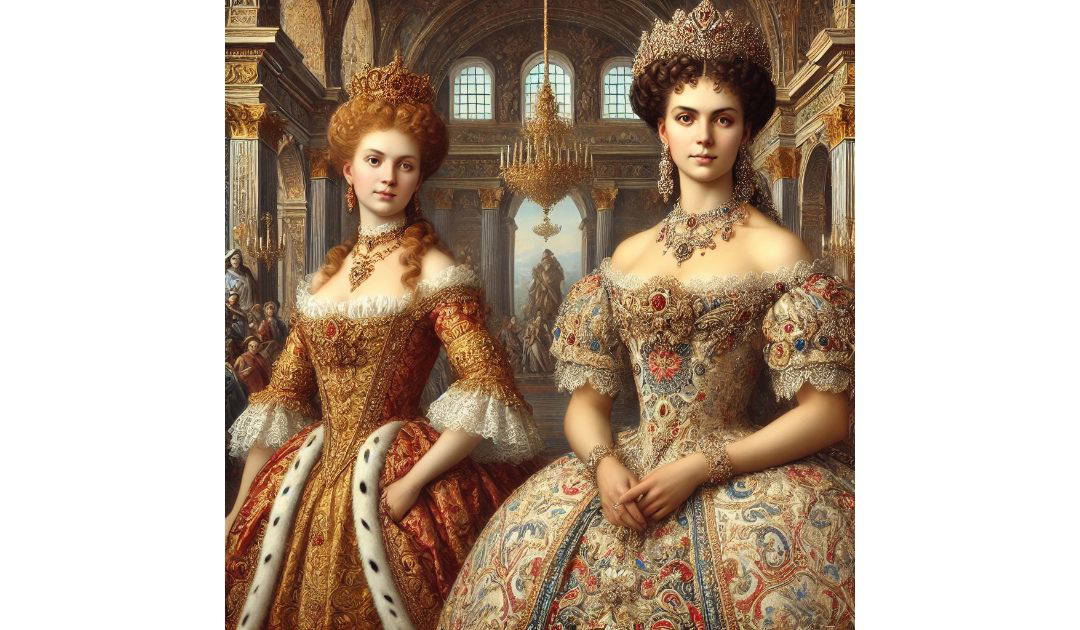On 25th November 1741 Elizabeth seized Russia from her cousin Anna Ivanovna. Elizabeth Petrovna, known as Elizabeth of Russia, was one of the most intriguing figures of the Russian imperial history. Born on December 29, 1709, she was the daughter of Peter the Great and Catherine I, which placed her in the heart of the Romanov dynasty. Elizabeth’s reign, spanning from 1741 to 1762, was marked by a blend of elegance, determination, and astute political maneuvering, making her one of Russia’s most memorable rulers. Despite a life filled with drama and political intrigue, she managed to strengthen the Russian Empire and leave a significant impact on the country’s development.
Elizabeth’s ascent to the throne was nothing short of dramatic. She grew up during a turbulent time, witnessing the frequent power struggles that plagued the Russian court after her father’s death in 1725. For many years, Elizabeth lived under the shadow of her cousin, Anna Ivanovna, who ruled as Empress from 1730 to 1740, and her successor, the infant Ivan VI, who was controlled by the regent Anna Leopoldovna. Although Elizabeth was loved by the Russian people for her beauty, charm, and lively personality, she was kept away from political power, largely due to fears that her popularity might threaten those in power. In 1741, after years of courtly sidelining, Elizabeth orchestrated a coup with the help of the Preobrazhensky Guards, a regiment loyal to her father. Without a drop of bloodshed, Elizabeth seized power and declared herself Empress of Russia. Her dramatic rise was met with widespread approval, as she was seen as a legitimate heir who could restore the legacy of Peter the Great.
One of the key features of Elizabeth’s reign was her commitment to continuing her father’s vision of modernizing Russia. Though she is often remembered for her love of extravagance and the arts, Elizabeth was a capable and effective ruler. She abolished the death penalty in Russia, a remarkably progressive move for the time, and focused on internal reforms, particularly in the realm of education.
Elizabeth founded the University of Moscow in 1755 and the Academy of Fine Arts in St. Petersburg, laying the groundwork for Russia’s intellectual and cultural enlightenment. Her reign was also marked by an emphasis on architectural beauty, as she commissioned the construction of stunning baroque structures, including the Winter Palace and the Smolny Cathedral, which remain iconic landmarks in St. Petersburg today.
On the international stage, Elizabeth was a force to be reckoned with. She was deeply involved in European politics, most notably during the Seven Years’ War (1756-1763). Elizabeth initially allied with France and Austria against Prussia, led by Frederick the Great. Her military efforts were effective, and Russian forces achieved several victories over Prussia, significantly weakening Frederick’s position. Although Elizabeth’s death in 1762 led to a swift change in Russia’s foreign policy under her successor, her contributions to the war showcased her ability to project Russian power on the European stage.
Despite her reputation for leading a lavish lifestyle—she is said to have owned thousands of elaborate gowns and never wore the same dress twice—Elizabeth’s reign was a time of relative stability and growth for Russia. Her refusal to execute political enemies, her investments in education and culture, and her diplomatic prowess contributed to a prosperous and peaceful era.
Elizabeth of Russia remains a fascinating figure who defied the traditional image of a ruler. While she embraced the grandeur of the imperial court, she was also a compassionate leader with a vision for her country. Her reign not only reinforced the strength of the Romanov dynasty but also set the stage for the cultural and intellectual flowering that would define Russia in the centuries to come.

